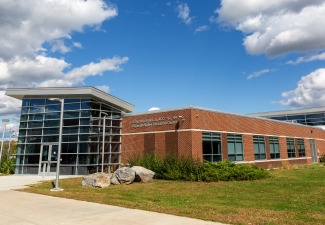SUNY Plattsburgh Undergraduate's Work Combines GIS Technology and Anthropology
Dr. Mark Cohen called Justin Sabino’s independent study project an unprecedented achievement.
As a dual geographic information system and anthropology independent study, Sabino created a method to compare data variables for 588 Maya skeletons.
“He saw a connection, which is the best thing students can possibly do,” said Cohen, a distinguished professor of anthropology.
‘An Astonishing Piece of Work’
Using variables such as age, gender, stature, illness and trauma, Sabino set up a 3-D map that can be scanned, looking at one variable or a number of variables, helping scientists to analyze the data. For instance, the map will allow scientists to look for relationships between stature and illness or trauma and burial location.
“What other precedents are there? There are none. All in all, it’s an astonishing piece of work. This is so special.” - Dr. Mark Cohen
The variables are based on original data from a 16th to early 17th century Christian graveyard in Belize, excavated with permission from the Belize government in 1980. This ancient Maya skeleton collection, housed in Ward Hall, is the largest in the world.
With Sabino’s system, future students and professors can analyze and input further data. Doing so will help them to discover connections or understand genetic relationships. In fact, such a project is currently underway. Cohen said they are looking into mitochondrial DNA through women’s lineage.
Archaeology Interest Stems from Love of History
“In archaeology, the relationship of things is often more important than the things,” he said.
For Sabino, it was the relationship between his GIS minor and his anthropology/and archeology majors that prompted the 400-hour project. His lifelong interest in history also played a part.
“Archaeology is just an extension of my love of history, but instead of reading about it in a book, you get to go out and discover it yourself,” he said. “It might sound like hard, boring work to spend all day hunched over a hole in the ground, but, when you find a hammerstone or a tool fragment and realize that 10,000 years ago a smelly dude was sitting in that exact same spot, holding that exact stone you've spent all day carefully excavating, it's a pretty powerful feeling.”
Sabino accompanied Cohen to this year’s National Conference of the American Association of Physical Anthropology in Minneapolis, where his work drew interest from professors at graduate schools around the country.
“He’s an example of what a Plattsburgh undergrad can do,” Cohen said. “Be inspired by that.”
News

SUNY Adirondack Students Benefit from New Dual Agreement with SUNY Plattsburgh Queensbury
